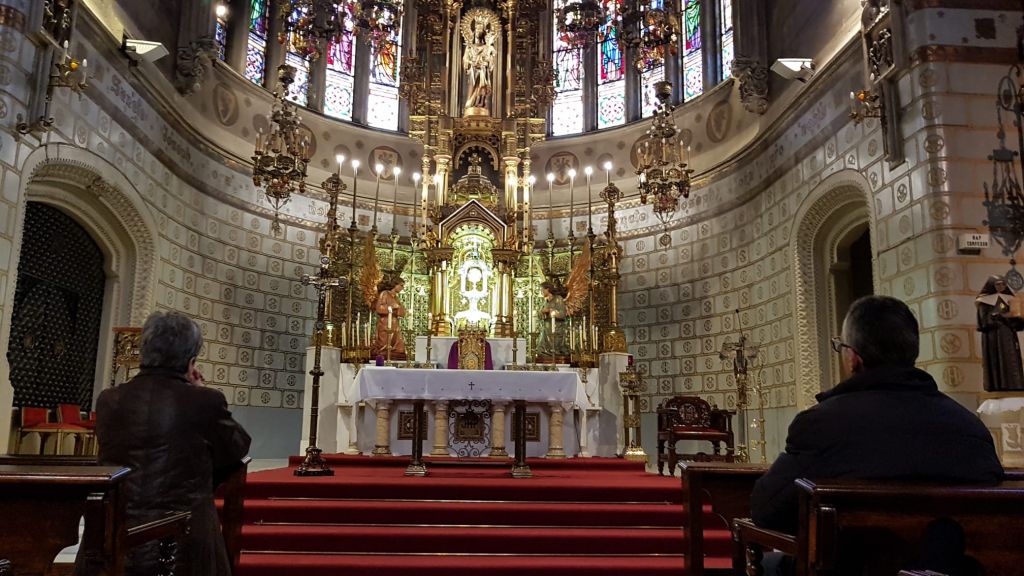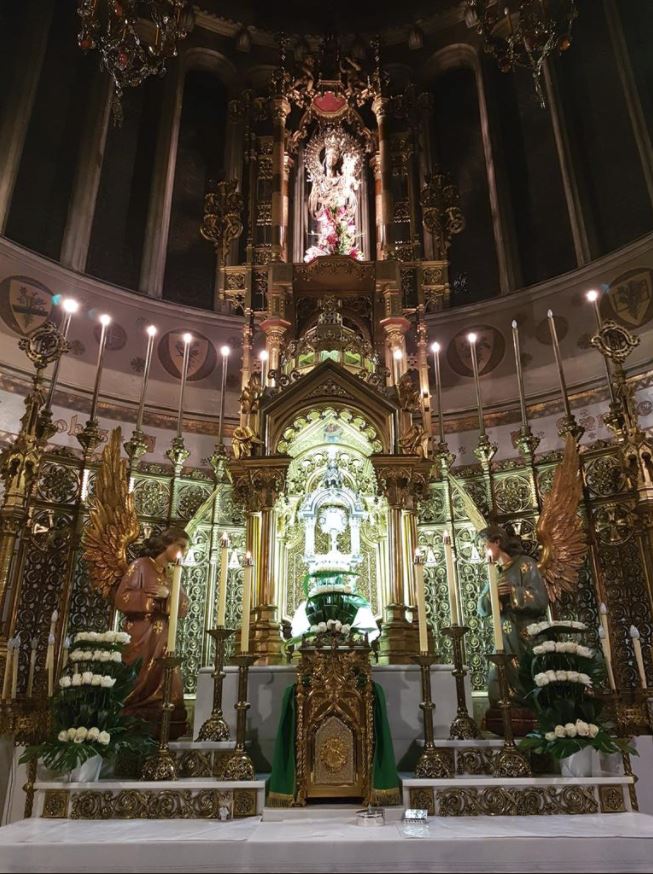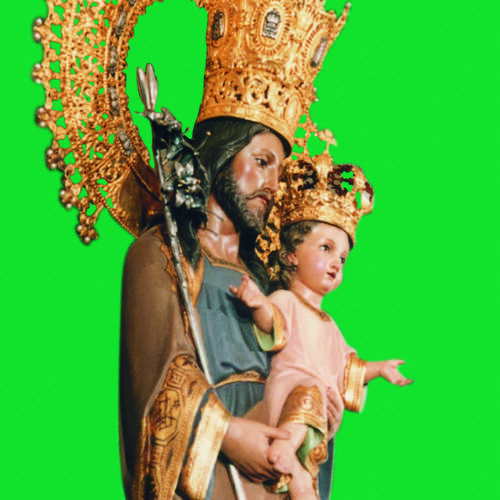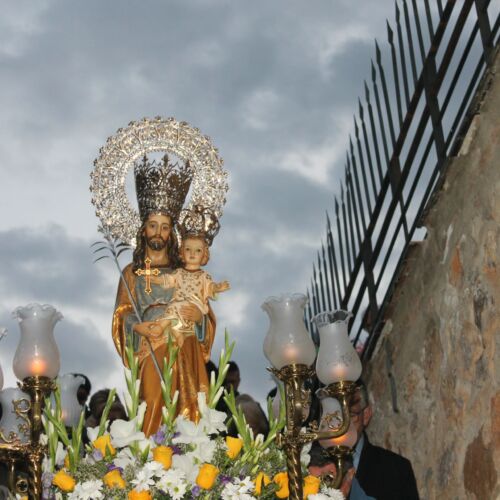EXHIBITION OF THE BLESSED
the Royal Shrine Saint Joseph of Montain holds the Exposition of the Blessed Sacrament.


The Congregation of Mothers of the Desamparados and San José de la Montaña welcomes those who come to the Shrine for this communal act in which contemplative silence and the Word of God have to lead us to a more intimate union with him.
The volunteers of the San José de la Montaña Association collaborate in the realization of this event with great devotion.
Adoration of the Blessed Sacrament.
The practice of adoration has its roots in the fact that in monasteries and convents the blessing of the Blessed Sacrament was an integral part of the structure of cloistered life. From the beginning of life in the community the Eucharist was originally made in a special room, just outside the altar but separate from the church where Mass was celebrated. A wide variety of names have been used to identify this reserved site: the most common are pastoforium, diakonikon, secretariat, or prosthesis. One of the first unmistakable references to the use of the Blessed Sacrament for adoration is found in the life of Saint Basil (who died in 379). Basilio is said to have divided the Bread into three parts when celebrating Mass in the monastery. One part he consumed, the second part he gave to the monks, and the third he put on a golden dove suspended above the altar.1
The practice of this type of worship formally began in Avignon (France) on September 11, 1226, to celebrate and give thanks for the victory obtained over the Cathars in the last battles they had in the Albigensian Crusade. King Louis VII of France ordered that this sacrament be kept in the Cathédrale Sainte-Croix d’Orléans or Cathedral of the Holy Cross of Orleans. The large number of worshipers made the Bishop, Pierre de Corbie, suggest that worship should be continuous and unceasing. With the permission of Pope Honorius III, the idea was ratified and continued in this manner virtually uninterrupted until the chaos that formed during the French Revolution stopped it in 1792 until the efforts of the GRAY Penitent Brotherhood brought it back in 1829.1
Mother Mechtilde of the Blessed Sacrament pioneered the perpetual adoration of the Eucharist in response to Père Picotte. The Benedictine convent, founded for this purpose, was inaugurated in France on March 25, 1654.2 Another of the first common practices of worship is the Forty Hours, an exercise of devotion in which it is prayed continuously for forty hours before it is celebrate the Eucharist. It is said that it began in Milan in May 1537





